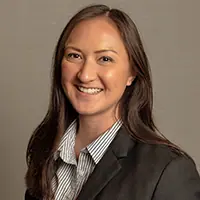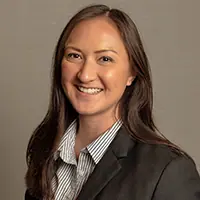
New Understanding Emerging Around Uninsured Deposits
In the wake of the March banking crisis, boards and management teams may want to reexamine the assumptions and modeling around their depositor base, especially when it comes to their large accounts.
An uninsured deposit is any deposit in excess of the $250,000 deposit insurance limit. In the past, deposits that were transactional or operational accounts could have been seen as “core” for a bank, helping it maintain liquidity cheaply. That view may be evolving, aided by the failure of two regional business banks and continued competition for deposits. Complicating – and accelerating – this issue is the ease of technology that large depositors can now use to move their money.
“One clear takeaway from recent events is that heavy reliance on uninsured deposits creates liquidity risks that are extremely difficult to manage, particularly in today’s environment where money can flow out of institutions with incredible speed,” said Federal Deposit Insurance Corp. Chair Martin Gruenberg in late March in written Senate testimony.
Uninsured deposit runoff led to the closures of Santa Clara, California-based Silicon Valley Bank and New York-based Signature Bank, two regional business banks. At the end of 2022, uninsured deposits were 88% of total deposits at Silicon Valley and 90% of total deposits at Signature, Gruenberg said. He added that the top 10 depositors at Silicon Valley had more than $13.3 billion in aggregate deposits.
“I’m not sure that a lot of folks gave too much thought to uninsured deposits prior to what happened over the last couple of weeks,” says Jeff Davis, managing director of Mercer Capital’s financial institutions group. “There’s always been risk that the deposits could move, it was just much more pronounced than I ever perceived.”
While concerns about the industry’s solvency seem to have abated since the apex of the crisis, banks still face a competitive funding environment. Total bank deposits were $19.2 trillion at the end of the fourth quarter 2022, down for the third consecutive quarter, according to the FDIC. Insured deposits increased during the quarter but not enough to offset the loss of large accounts.
That competition for funding showed up as the top strategic challenge bank leaders believe their organization faces this year in Bank Director’s 2023 Risk Survey; the survey was conducted in January, before the March banking crisis. Even then, 61% reported that their bank has experienced some deposit loss, with minimal to moderate impacts on their funding base; 11% said that deposit outflows had a significant impact on their funding base.
Deposit outflows, especially among uninsured accounts, has underlined the importance of bank liquidity management strategies and the need to update deposit stability modeling and assumptions. “Most banks are overestimating … their deposit value,” wrote Chris Nichols, director of capital markets for SouthState Bank, in a recent post. SouthState Bank is a unit of Winter Haven, Florida-based SouthState Corp., which has $44 billion in assets.
Banks often use a static decay analysis to calculate how long deposits will remain on the balance sheet, but Nichols believes this analysis may lead banks to overestimate the stability and value of these deposits. Instead, he recommended using models that can incorporate several economic scenarios and variables.
Neil Stanley, founder of bank deposit consultancy firm The CorePoint, agrees that static decay studies may become less accurate going forward. He argues that that historical data used in those models is less predictive, since rates were exceptionally low for the last 15 years.
“I am certainly not saying there’s no stickiness in these accounts, but I can tell you that we are going to discover what is sticky and what’s not,” he says. “Decay studies will say that a checking account has a life of eight to 10 years. On what basis? If you pay nothing on a checking account for the next two years, [do you really think] that none of those deposits will leave?”
Beyond updating deposit models, Davis says that boards and executives should incorporate hypothetical tail events and potential responses in their strategy overviews, reexamine policies that will govern any emergency liquidity actions and ensure collateral is in place to access external wholesale liquidity. They should try to get a sense of their bank’s depositor base, deposit types and the largest accounts, and should be attuned to any changes in the liquidity profile or risk since March 2020. One question he recommends directors ask are what strategies can management quickly employ in the face of an unexpected outflow of large depositors.
Already, some banks with a heavy commercial focus have published disclosures around their deposit mix. Kansas City, Missouri-based UMB Financial Corp., which has $38.5 billion in assets, has filed two updates about its deposit base ahead of its earnings release, including period-end deposits, deposits by business line, customer segments, length of relationship and estimated uninsured deposits.
Davis adds that banks may also want to educate depositors on their options and explore additional deposit coverage products, such as sweep and reciprocal accounts that can expand insurance coverage for large accounts. In Bank Director’s 2023 Risk Survey, popular liquidity management options included raising interest rates offered on deposits or borrowing from a Federal Home Loan Bank. Less popular options among respondents included raising brokered deposits, using participation loans, tightening credit standards and using incentives to entice depositors.
“There’s going to be a little bit of risk in every deposit franchise, but for the vast, vast majority of banks, it is not an existential risk,” Davis says. “It is something to be informed of and monitor.”



